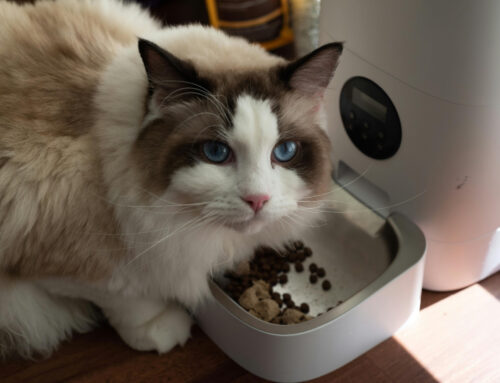Keeping your dog neat and clean is vital for their well-being and happiness, and grooming your dog at home can save expenses, build trust, and ensure your pet’s comfort. Whether you’re new to pet care or an experienced owner, this guide will help you confidently manage at-home grooming.
Why Grooming Your Dog at Home is Important
Regular grooming does more than improve your dog’s appearance. It also keeps them healthy. Here’s why grooming at home is worth considering:
- Strengthens the bond between you and your pet: Spending this time together improves trust.
- Reduces grooming costs: You avoid frequent trips to professional groomers.
- Identifies health issues early: Spot unusual lumps, skin irritations, or pests before they become serious problems.
- Minimizes stress: Familiar surroundings can make grooming a calmer experience for your dog.
- Customizes care: Tailor the grooming process to your pet’s unique needs.
Tools You’ll Need for At-Home Dog Grooming
Having the proper tools ensures a smooth grooming experience. Equip yourself with the following:
- Brushes and combs: Select based on coat type—slicker brushes for long fur, bristle brushes for shorter coats.
- Nail clippers or grinders: Keep your dog’s nails at a safe length to prevent discomfort or injury.
- Shampoo and conditioner for dogs: Human products can irritate their skin, so use those made for pets.
- Ear-cleaning solutions: Maintain clean ears to avoid infections.
- Trimming tools: Scissors or clippers are essential for tidying up hair in sensitive areas.
- Towels and a hair dryer: Thorough drying prevents skin irritation or cold-related problems.
- Dental care items: A toothbrush and pet-safe toothpaste are key for oral hygiene.
Steps for Grooming Your Dog at Home
1. Brush Your Dog’s Fur
Brushing is the cornerstone of dog grooming. It removes loose hair, decreases shedding, and prevents tangles or mats.
- Short-haired breeds: Weekly brushing is sufficient using a soft-bristle brush.
- Long-haired breeds: Daily brushing with a slicker brush ensures smooth, tangle-free fur.
- Double-coated dogs: An undercoat rake is useful during heavy shedding periods.
Brushing also distributes natural oils, keeping your dog’s coat shiny and healthy.
2. Bathe Your Dog Properly
Bathing your dog keeps their coat fresh and dirt-free. Aim for a bath every 4-6 weeks unless needed sooner.
- Set up your area: A non-slip mat in the tub helps prevent falls.
- Use water at the right temperature: Lukewarm water is ideal to avoid discomfort.
- Apply shampoo thoroughly: Work it into a lather, paying attention to soiled spots like paws and belly.
- Rinse out all soap: Leftover shampoo may lead to skin irritation or dryness.
- Dry completely: Use a towel to remove excess water, then a dryer on low heat to finish.
3. Trim Your Dog’s Nails
Overgrown nails can cause walking difficulties and discomfort. Trimming them regularly helps keep your dog’s paws healthy.
- Use high-quality clippers: Pick sharp clippers or a grinder suitable for dogs.
- Choose a quiet spot: Fewer distractions make the process smoother.
- Clip a small portion at a time: Avoid cutting too close to the quick, as this area is sensitive.
If you accidentally cut too close, have styptic powder on hand to stop bleeding.
4. Clean Your Dog’s Ears
Cleaning your dog’s ears helps prevent infections and keeps them comfortable, especially for breeds prone to ear issues.
- Check for signs of trouble: Look for redness, bad odor, or excess wax.
- Use a proper solution: Dampen a cotton ball with a vet-recommended cleaner and gently clean the outer ear.
- Avoid going too deep: Stay outside the ear canal to prevent injuries.
Regular ear checks can prevent serious problems down the line.
5. Trim Hair Around Sensitive Areas
Maintaining neat fur around your dog’s eyes, paws, and private areas prevents hygiene problems and improves visibility.
- Use blunt scissors for safety: This reduces the chance of accidents.
- Go slowly and stay calm: Keep your dog relaxed and reward them with treats.
- Tidy the paws: Trim hair between paw pads to prevent matting or debris buildup.
6. Brush Your Dog’s Teeth
Oral care is an often-overlooked part of grooming but is vital for overall health.
- Start slow: Let your dog get used to the toothbrush by letting them sniff it.
- Use pet-safe toothpaste: Never use human toothpaste, as it can harm dogs.
- Brush gently: Focus on the gum line where plaque tends to build up.
Regular brushing prevents bad breath and reduces the risk of dental diseases.
Tailoring Grooming for Different Coat Types
Short-Coated Breeds
Dogs with short coats are easier to maintain but still require attention:
- Brush weekly to remove dead fur and promote a shiny coat.
- Use grooming gloves to massage the skin and spread natural oils.
Long-Coated Breeds
Long-haired dogs demand consistent care to prevent tangling:
- Brush daily to manage knots and tangles.
- Use a detangling spray when brushing stubborn mats.
- Trim hair to keep it manageable and neat.
Curly-Coated Breeds
Poodles and similar breeds need specialized care to keep their coats in good shape:
- Brush with a slicker brush to avoid matting.
- Regular trims by you or a professional are often necessary.
- Avoid skipping grooming sessions to prevent dense mats.
Grooming Dogs with Allergies
Dogs with allergies often require extra care during grooming to avoid triggering discomfort or reactions. Here’s how to manage their grooming:
- Use hypoallergenic products: Choose shampoos, conditioners, and ear-cleaning solutions specifically designed for dogs with sensitive skin. These products are free from harsh chemicals and fragrances that can irritate allergies.
- Brush frequently: Regular brushing helps remove allergens like pollen and dust that may cling to your dog’s fur. Use a soft-bristle brush to avoid irritating their skin.
- Bathe with care: Limit baths to once every 4-6 weeks unless recommended otherwise by your vet. Overbathing can strip natural oils, exacerbating skin issues. Use lukewarm water and gently massage the shampoo to soothe itchy spots.
- Check for flare-ups: During grooming, inspect your dog’s skin for redness, rashes, or excessive scratching. Address any issues promptly with your veterinarian.
- Keep tools clean: Wash brushes, combs, and clippers regularly to prevent allergens from building up. Use pet-safe disinfectants to ensure a hygienic grooming routine.
- Wipe paws after outings: After walks, use pet-safe wipes to clean your dog’s paws and reduce allergen exposure.
- Consult your vet: If your dog has persistent allergy symptoms, ask your vet for guidance on the best grooming practices and products for their condition.
Common Grooming Mistakes and How to Avoid Them
- Skipping brushing sessions: This leads to mats that can become painful.
- Using human shampoos: Dogs need specially formulated products to protect their skin.
- Neglecting oral care: Brushing teeth is an important part of grooming.
- Rushing the process: Always ensure your dog feels safe and unhurried.
- Ignoring the paws: Neglecting paw care can lead to discomfort or injury.
How to Make Grooming a Stress-Free Experience
Grooming can sometimes feel daunting for both pets and owners. However, a few strategies can make it a smoother process:
- Start early: Familiarize your dog with grooming from a young age.
- Be patient: Take breaks if your dog seems restless or anxious.
- Create a routine: Regular grooming sessions help your dog feel more comfortable over time.
- Use positive reinforcement: Reward your dog with treats, toys, or praise after each step.
- Play calming music: A soothing background can help keep your dog relaxed during grooming.
Additional Tips for Successful Dog Grooming
- Choose the Right Time: Groom your dog when they’re calm and relaxed, such as after exercise or a meal. Avoid grooming when your dog is overly energetic or agitated.
- Monitor Your Dog’s Mood: Pay attention to your dog’s body language. If they seem stressed or scared, pause the session and try again later. Pushing too hard can make them associate grooming with fear.
- Invest in High-Quality Tools: Durable grooming tools save time and make the process smoother. A well-designed brush, for instance, can handle tangles without pulling on your dog’s coat.
- Rotate Activities: Instead of completing all grooming steps in one session, split them across several days. This approach keeps each session short and less overwhelming.
- Keep Yourself Relaxed: Dogs pick up on your emotions. If you stay calm and confident, your dog is more likely to mirror your demeanor.
- Recognize Breed-Specific Needs: Each dog breed may require slightly different care. Research your dog’s specific grooming requirements to ensure you’re meeting their needs effectively.
- Maintain a Schedule: Consistency in grooming builds trust and ensures all areas of care are addressed regularly. For example, brushing can be done every other day, while bathing occurs monthly.
- Seek Guidance When Needed: If you’re unsure about certain grooming techniques, ask a professional groomer or veterinarian for advice. They can provide valuable tips and demonstrations to improve your skills.
Benefits of Grooming Your Dog Yourself
- Improved health: Grooming prevents infections, skin problems, and other medical issues.
- Better appearance: A clean, brushed coat makes your dog look their best.
- Strengthened connection: Regular grooming fosters a deeper relationship with your pet.
- Cost savings: Grooming at home reduces reliance on professional services.
- Stress reduction: Familiar settings make grooming less intimidating for your dog.
Wrapping Up: Mastering At-Home Grooming
Grooming your dog at home is not only practical but also a rewarding experience. With proper tools and a bit of patience, you can create a comfortable routine for your pet. Remember, consistency is key—regular care ensures your dog remains healthy, happy, and looking fantastic.
Start small and build your confidence with each grooming session. Soon, both you and your furry companion will look forward to this time together.
Grooming may take effort, but it offers countless benefits for you and your dog. Dive in with a positive mindset, and enjoy the process of keeping your best friend healthy and content.




